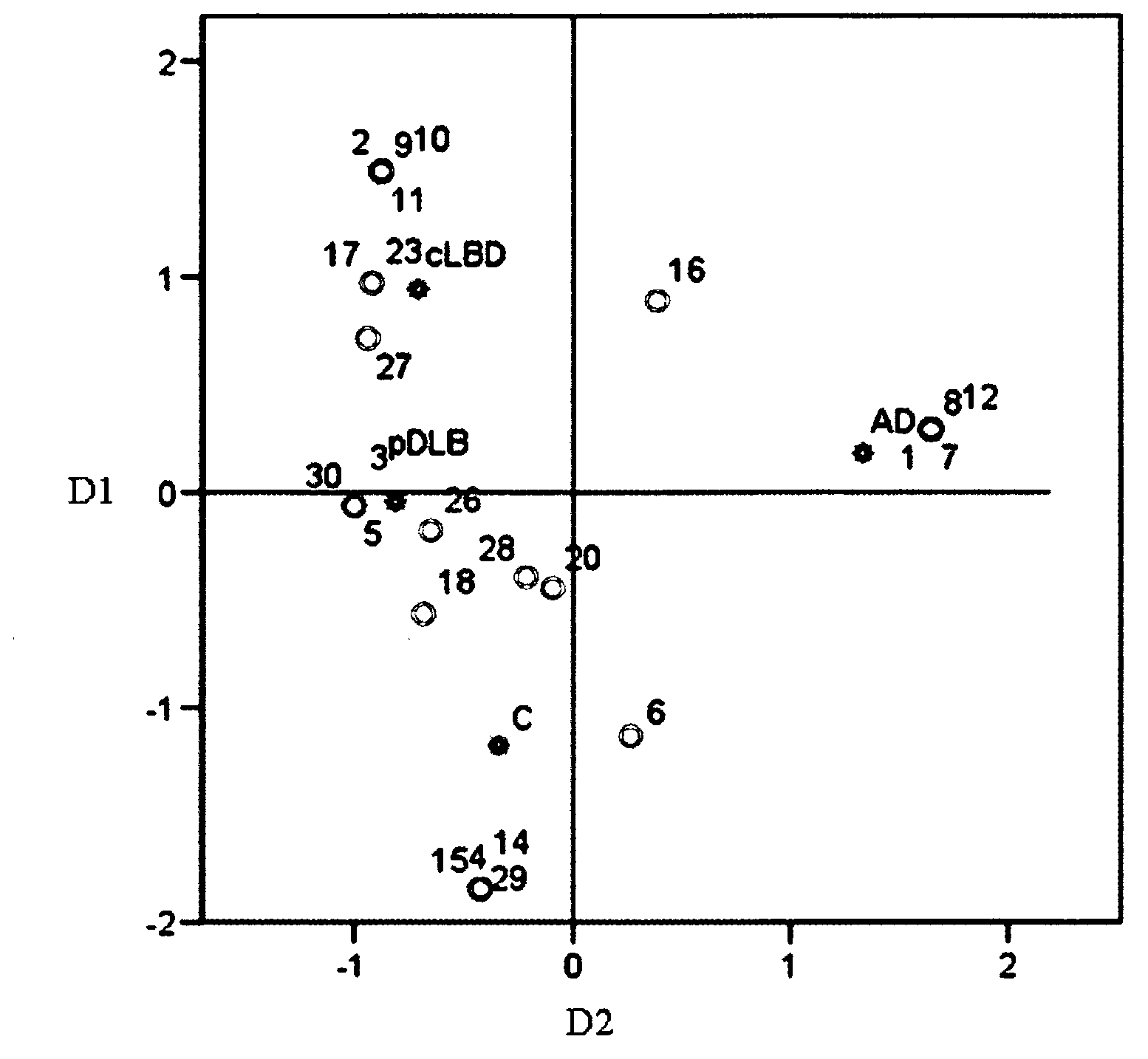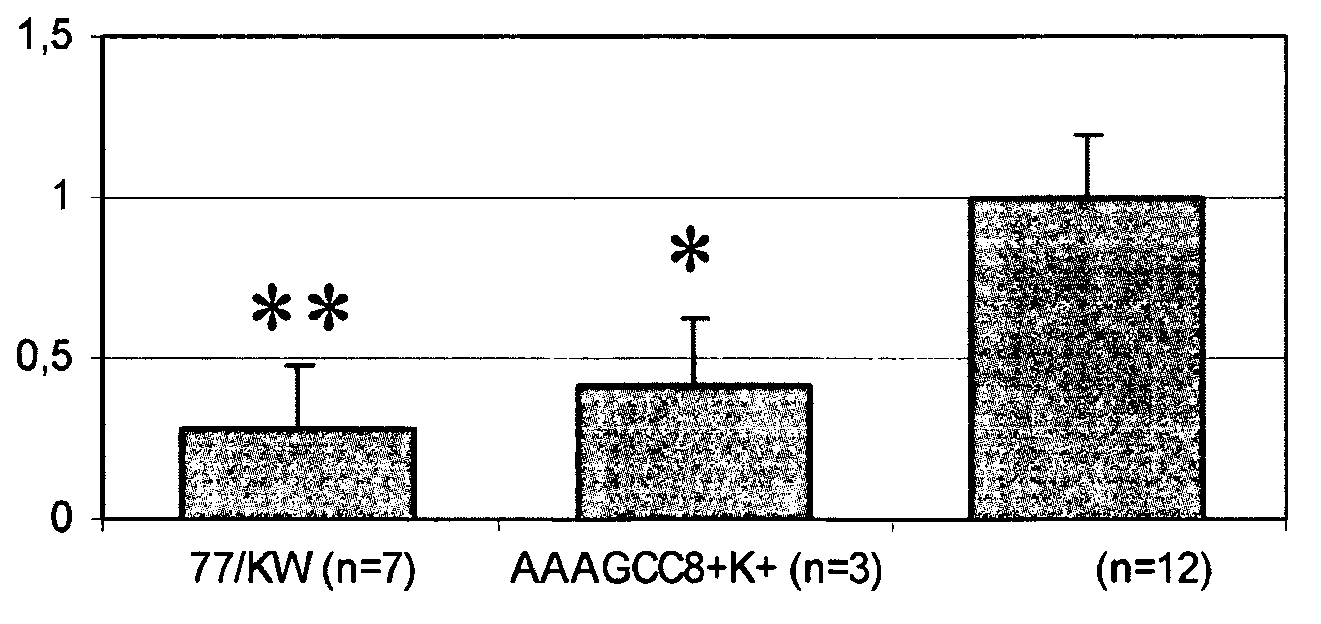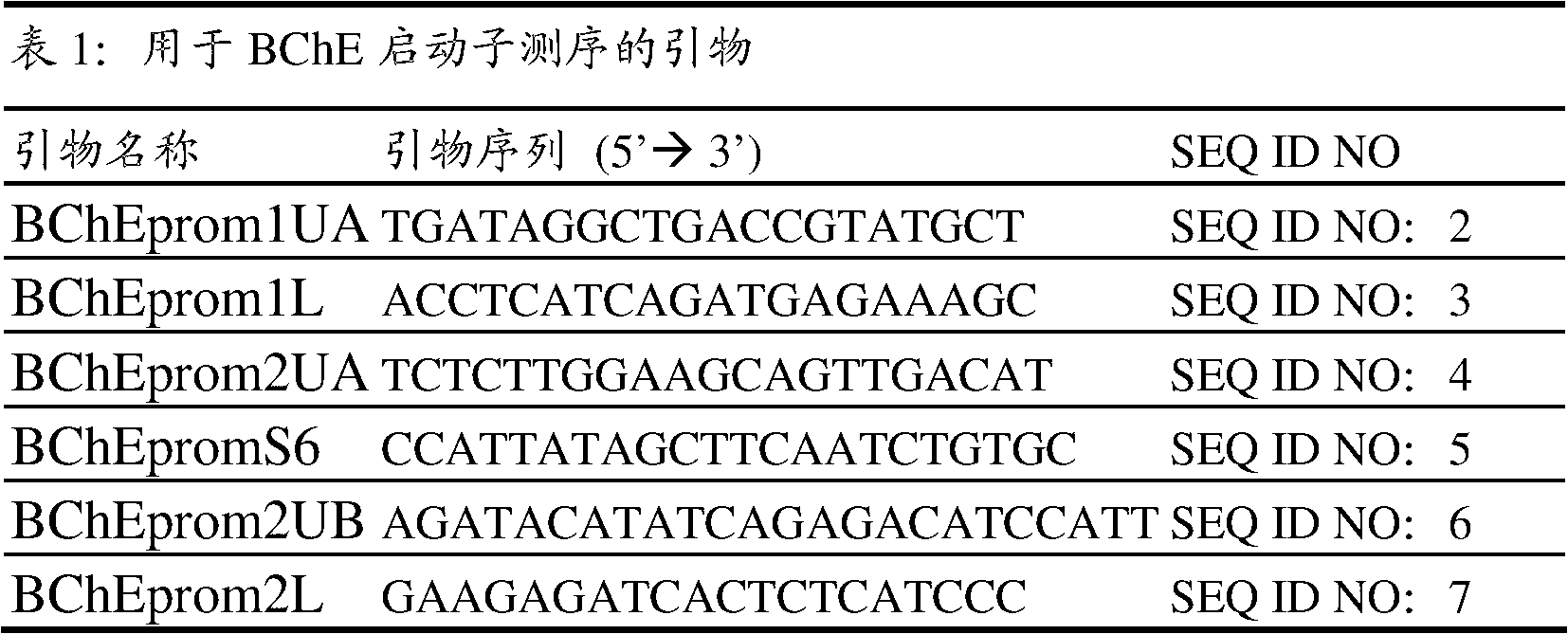Genetic marker for the diagnosis of dementia with lewy bodies
A Dementia, Useful Technology for Medical Fields to Reduce Deaths, Increase Diagnosis Specificity, and Save Money
- Summary
- Abstract
- Description
- Claims
- Application Information
AI Technical Summary
Problems solved by technology
Method used
Image
Examples
Embodiment Construction
[0060] postmortem sample
[0061] Postmortem frontal cortex samples with clinical and neuropathological diagnoses were collected from the University of Barcelona Neurological Tissue Bank and the Bellvitge Institute of Neuropathology according to the rules established by the local ethics committee. Brain Bank, BrainNet Europe). They corresponded to 24 brains with common Lewy body disease (cLBD) (age at death: 79.9, age range from 64 to 90; female:male ratio 1.5:1), 12 brains with dementia with pure Lewy bodies (pDLB) ( Age at death: 74.4, age range from 60 to 80; female:male ratio 1:2), 26 AD brains (age at death: 78.1, age range from 61 to 95; female:male ratio 1:1.1) and 23 controls Brain (age at death: 68.5, age range from 54 to 83; female:male ratio 1:1.1).
[0062] Neuropathological examination showed that all AD brains showed AD Braak and Braak VI stages. Braak and Braak are stages used to evaluate / quantify AD in the brain. It is used by neuropathologists to evaluat...
PUM
 Login to View More
Login to View More Abstract
Description
Claims
Application Information
 Login to View More
Login to View More - R&D
- Intellectual Property
- Life Sciences
- Materials
- Tech Scout
- Unparalleled Data Quality
- Higher Quality Content
- 60% Fewer Hallucinations
Browse by: Latest US Patents, China's latest patents, Technical Efficacy Thesaurus, Application Domain, Technology Topic, Popular Technical Reports.
© 2025 PatSnap. All rights reserved.Legal|Privacy policy|Modern Slavery Act Transparency Statement|Sitemap|About US| Contact US: help@patsnap.com



